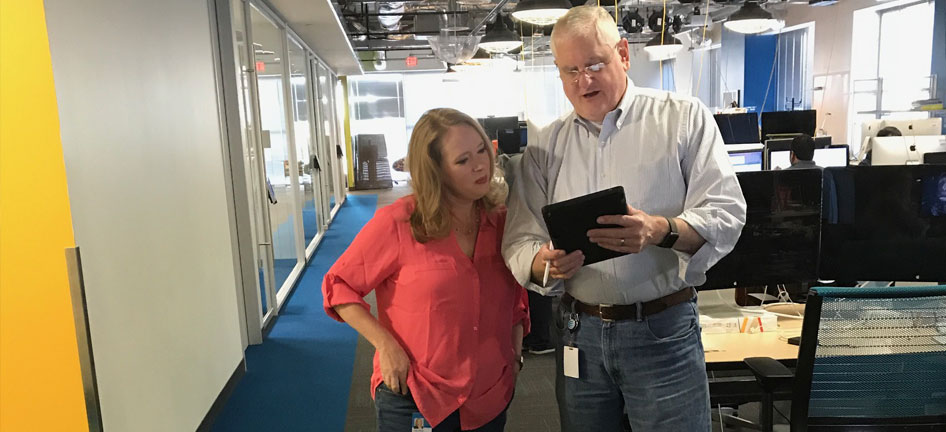GOTCHA: From stay-at-home mom to data scientist detecting bad guys

By Lauren Garner
AT&T Insider Staff Writer
Senior data scientist Melissa Lee uses data analytics to detect bad guys. Bad guys who are trying to hide on our network or keep us from accessing other websites.
But she didn't always have the desire to do this job. Melissa's journey to AT&T included pinpointing her own interests, trialing a career that didn't suit her and pursuing a new degree before even stepping in our door.
Ultimately, her journey – from mom to data scientitst/superhero – culminated in her own personal skills transformation
From a mom to a master's
Melissa started college in 1996 with a major in math. She met her husband, Jeff, and soon became interested in being a wife and starting a family. When her 3 children, Bryant, Daniel and Cullen, were older, she decided she wanted to do more. She went back to Texas A&M University–Commerce to earn her Bachelor of Science in mathematics.
"At the time, I thought teaching was all that you could do with a math degree," Melissa said. "Moms teach, so I became a substitute teacher in the fall of 2010."
Watch to hear Melissa's personal journey from teacher to data scientist. And her thoughts on what it takes to be in her role.
Data-powered at AT&T
After her teaching journey and a subsequent stint starting as a software engineer at Ericsson, Melissa found her way to AT&T and work she loves. Today, she supports one of our top priorities: improve everything with data-powered insights.
Melissa paints a great picture to explain her technical role.
One of her last projects was to look for anomalies in our network traffic.
"These anomalies can point to things like intrusion attempts, malware or different kinds of malicious activity," Melissa said. "We took machine learning methods and looked for patterns that weren't normal. It sounds complicated, but it's really quite simple."
"Think of it as every time you visit the grocery store," she said. "You go to pick out an apple and you find one that is all bruised up. You immediately know you don't want to take that home. You learned what a normal apple looks like."
Melissa and other data scientists do this on our network on a much larger scale. They learn what normal traffic looks like and they pick out the things that don't belong there.
"We do that using singular value decomposition," she said. "That's just a sneaky math trick to identify the patterns in the data."
Hackers and malicious actors, though, make the job difficult. They would force Melissa's model to perceive bad behavior as normal. But Melissa got wise and learned, too, employing a different analytic technique, called the robust method.
"Basically, we let math separate the noise before we build our model, so we catch the bad activity," Melissa said. "Now think of it as a shopping mall with a lot of people walking around. You only want to see the actual mall. You can use a robust method to separate the people from the surroundings to get a more accurate picture."
Super math skills to the rescue
Every day is a new challenge for our data scientists. Lately, Melissa has been working on fraud and risk analysis. She works to protect our consumers from a possible account-takeover situation when they log into websites.
"You feel a little bit like a superhero," Melissa said. "It's almost a gotcha! gratification when you detect something that someone is trying to hide from you. There are lots of pats on the back. The idea of knowing you're getting ahead of the bad guy just a little bit is really nice."
Melissa's skills transformation has provided her great personal satisfaction. And she encourages others going through their own skills pivot to keep striving to find their place.
"I was that person at one point. I encourage colleagues to find a strong support system because it's hard," she said. "Look for that person to keep you accountable and help you put one foot in front of the other when you want to quit. Many times I wanted to quit, but I'm really glad I didn't."